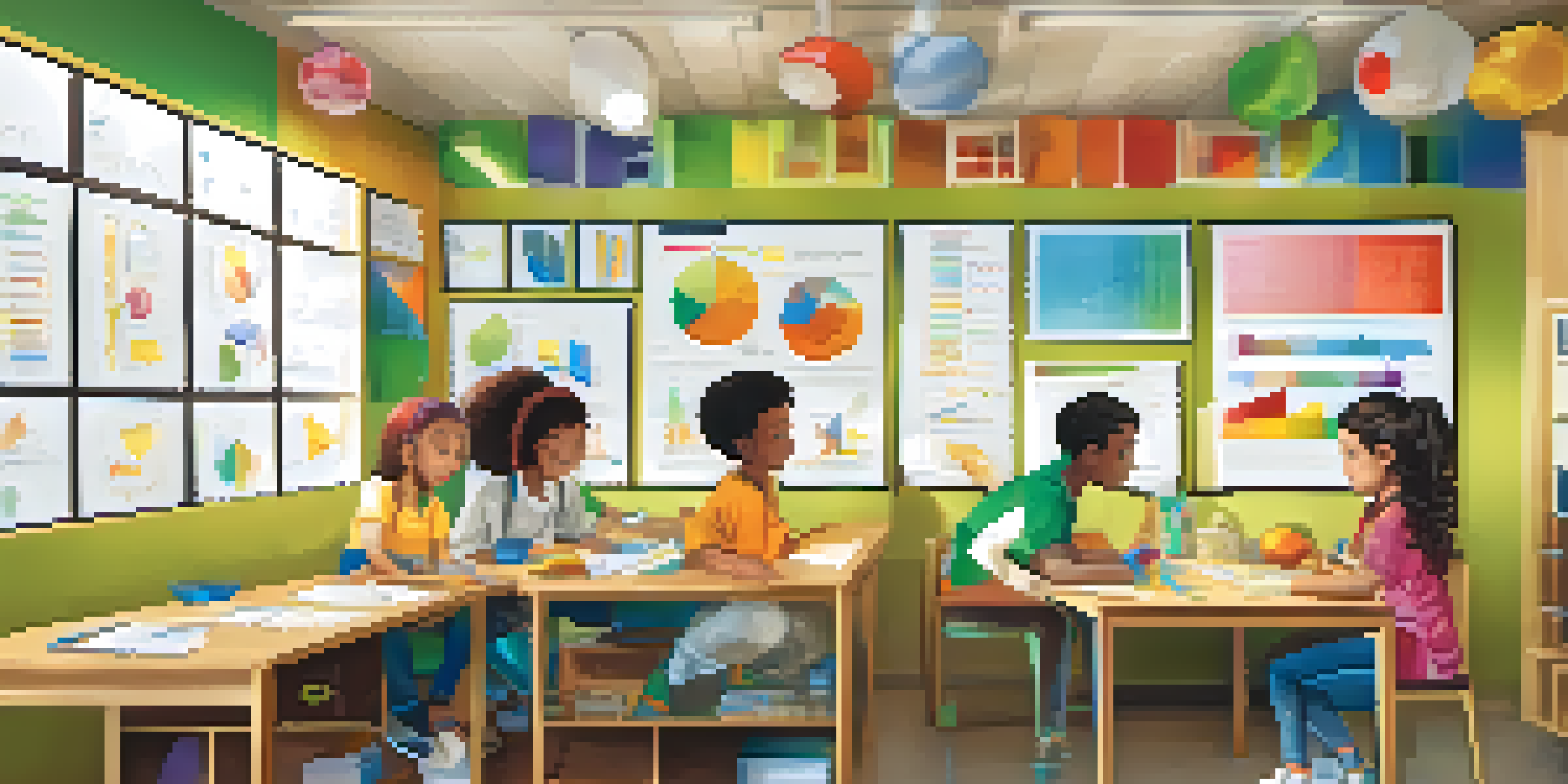Exploring Different Learning Styles for Effective Education

Understanding Learning Styles: What Are They?
Learning styles refer to the different ways individuals absorb, process, and retain information. They can significantly impact how students engage with material, which is vital in an educational setting. By recognizing these styles, educators can tailor their teaching methods to better suit diverse learners, fostering a more inclusive atmosphere.
The mind is not a vessel to be filled, but a fire to be kindled.
For instance, a visual learner might benefit from diagrams and videos, while an auditory learner may thrive through discussions and lectures. This understanding allows teachers to create varied lesson plans that cater to a broader audience. Ultimately, it's about meeting students where they are and guiding them toward success.
However, it's crucial to remember that most people don't fit neatly into one category. Many learners exhibit a combination of styles, so flexibility in teaching approaches is key. By embracing this complexity, educators can create a richer, more dynamic learning environment.
The Visual Learner: Seeing is Believing
Visual learners grasp concepts best when they can see them represented visually. This might include charts, videos, or even colorful presentations that break down complex ideas. For example, using infographics to summarize a lesson can make information more accessible for these learners.

Incorporating visual aids into lessons not only helps visual learners but can also enhance understanding for the entire class. Imagine trying to learn a new concept without any visual support; it can feel overwhelming. Engaging visuals can bridge that gap, making learning more effective and enjoyable.
Diverse Learning Styles Matter
Recognizing and understanding different learning styles allows educators to tailor their teaching methods to better support all students.
To support visual learners, educators can encourage note-taking with diagrams or encourage the use of mind maps. These tools help students organize their thoughts visually, leading to better retention and comprehension. By recognizing this style, teachers can empower their students to succeed.
The Auditory Learner: Listening and Learning
Auditory learners thrive in environments where listening and speaking are key. They often retain information better when it's delivered verbally, whether through lectures, discussions, or even listening to audiobooks. For these learners, the rhythm and tone of spoken words can enhance understanding and engagement.
Tell me and I forget. Teach me and I remember. Involve me and I learn.
Consider a student who struggles with reading comprehension but excels in a discussion setting. By providing opportunities for verbal expression—think group debates or oral presentations—educators can tap into this learner's strengths. This not only boosts confidence but also deepens understanding of the subject matter.
Incorporating music or rhythm into lessons can also benefit auditory learners. For example, using songs to memorize facts or concepts can make learning more memorable. By leveraging their natural tendencies, teachers can create a more effective and enjoyable learning experience.
The Kinesthetic Learner: Learning Through Movement
Kinesthetic learners are those who learn best by doing. They often struggle with traditional lecture-based formats and instead thrive in hands-on activities or experiential learning environments. Imagine a student who excels in science labs but finds it hard to sit still during a lecture; this is a classic kinesthetic learner.
To engage kinesthetic learners, educators can incorporate activities like role-plays, experiments, or simulations into their lessons. These interactive experiences not only make learning fun but also ensure that concepts are firmly grasped through practice. It's about connecting theory with real-world application.
Flexibility Enhances Learning
Adapting lessons to include various teaching techniques fosters an inclusive environment where every student can thrive.
Additionally, allowing movement breaks during lessons can help kinesthetic learners refocus and recharge. Simple activities like stretching or quick exercises can reinvigorate the class, making it easier for all students to engage with the material. By recognizing the importance of movement, educators can create a more dynamic and effective learning environment.
The Read/Write Learner: Words are Their World
Read/write learners excel when they engage with text. They often prefer written materials and benefit from reading and writing assignments. These learners may thrive on taking detailed notes, creating lists, or rewriting information to better understand it.
For instance, a student who enjoys writing essays may find that expressing their thoughts on paper helps solidify their understanding of a topic. Incorporating reading assignments, essays, and written reflections into lessons can cater to this style effectively. It allows these learners to explore their ideas in-depth.
Moreover, promoting reading comprehension strategies, such as summarizing and paraphrasing, can enhance learning for read/write learners. Encouraging journaling or blogging can also provide a creative outlet for their thoughts and ideas. By tapping into their love for words, educators can foster a deeper connection to the material.
The Importance of Flexibility in Teaching Methods
Recognizing the diversity of learning styles is crucial, but equally important is the need for flexibility in teaching methods. Students often possess unique combinations of styles, and a one-size-fits-all approach rarely works. By adapting lessons to include various teaching techniques, educators can cater to a wider range of learners.
For instance, incorporating group work that includes visual aids, discussions, and hands-on activities can engage all types of learners. This varied approach not only enriches the learning experience but also helps build collaboration skills among students. It encourages them to learn from one another's strengths.
Balanced Environments Boost Success
Creating a balanced learning environment that integrates multiple styles promotes collaboration and ensures no learner is left behind.
Ultimately, flexibility fosters an inclusive classroom environment where all students feel valued and supported. It's about creating a space where every learner can thrive, regardless of their preferred style. When educators embrace this flexibility, they pave the way for a more effective and engaging education.
Strategies for Identifying Learning Styles
Identifying individual learning styles in a classroom can be a game-changer for educators. Simple techniques, like surveys or quizzes, can provide insights into how students learn best. These tools allow teachers to tailor their lessons and create targeted strategies for each student.
Additionally, observing students during various activities can reveal their preferences. For example, a student who excels in group discussions might lean towards an auditory learning style, while another who prefers solo projects may be more kinesthetic. These observations can guide teachers in adapting their teaching methods.

Moreover, encouraging students to reflect on their own learning experiences can foster self-awareness. By asking them what methods help them learn best, educators can empower students to take charge of their own education. This partnership between teacher and student is key to fostering a successful learning environment.
Creating a Balanced Learning Environment
To truly support diverse learners, it's vital to create a balanced learning environment that incorporates various styles. This means blending different teaching methods, activities, and assessments to cater to all students. A well-rounded approach ensures no learner is left behind.
For instance, a single lesson could include visual presentations, group discussions, hands-on activities, and written reflections. By integrating multiple styles, educators can engage students on different levels, making learning more dynamic and effective. This balance not only benefits students but also enriches the overall classroom atmosphere.
Ultimately, a balanced learning environment fosters inclusivity and encourages collaboration among students. It sends a message that every learning style is valued and important. By prioritizing this balance, educators can create a thriving educational experience for all.